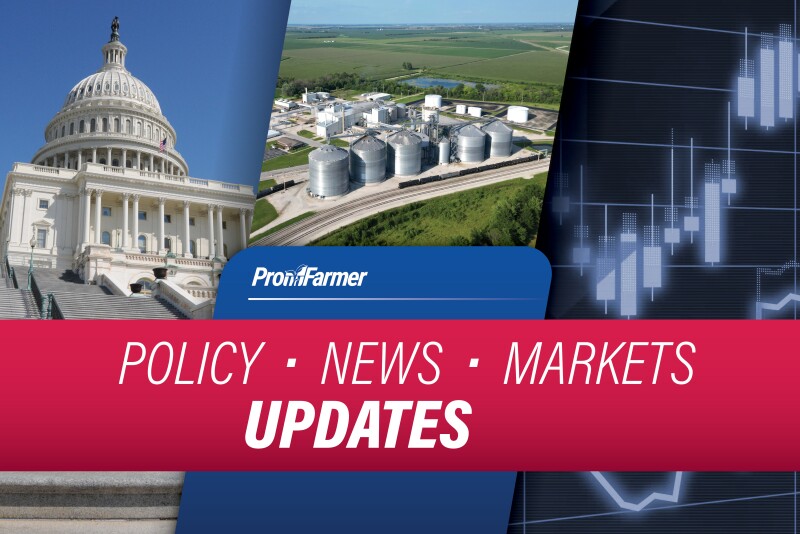Trump to impose 50% tariffs on Brazil, copper imports on Aug. 1... President Donald Trump warned Brazil he will impose a 50% tariff on all Brazilian exports to the U.S. starting Aug. 1 unless President Lula da Silva halts what Trump called a “witch hunt” trial against former president Jair Bolsonaro. Lula said the new tariffs would be met with reciprocal measures.
Unlike 21 other countries receiving Trump tariff letters this week, Brazil was not previously subject to “reciprocal” tariffs and had only faced a 10% minimum rate.
Trump also announced a 50% duty on copper imports will begin Aug. 1. Commerce Secretary Howard Lutnick told CNBC the administration aims to “bring copper production home,” aligning copper duties with recently doubled tariffs on steel and aluminum. However, industry analysts caution that U.S. production ramp-up will take years — if not decades — to close the import gap, as nearly half of America’s copper supply is imported, mostly from Chile. Other imports come from China, Japan and Congo.
Neiffer sizes up USDA’s SDRP Stage 1... USDA on Wednesday released the initial details for the new Supplemental Disaster Relief Program (SDRP) Stage 1, which is aimed at helping producers recover from recent losses. Paul Neiffer of Farm CPA Report offers an early analysis and practical guidance as details emerge.
Neiffer notes that “signup will be very similar to the old 2020-21 ERP program,” with FSA preparing the applications and estimating the damages for each producer. Initial payments in this round are likely to be just 35% of the calculated damages, with any potential “top-up” to follow at a later date — mirroring the ERP approach.
He also highlights a lingering question around de minimis acres: “We don’t see any details on how FSA will calculate de minimis acres that could be excluded from the crop insurance requirement in order for you to still get a 90% payment instead of the 70% payment that was an issue with ERP.” The law indicates these acres could be excluded, but implementation specifics are still unclear.
According to Neiffer, “the calculation of the payment appears to be very straight-forward and is simply recalculating your crop insurance indemnity using the same old ERP factors.” But this time, fees and crop insurance premiums are deducted from the indemnity. Example from the Federal Register illustrates the calculation: “Suppose a producer had a crop insurance policy with a coverage level of 65%, and the total administrative fee and premium was $3,500... The producer suffered a crop loss, and their production was valued at $250,000, resulting in a gross indemnity of $75,000...
To calculate the producer’s Stage 1 payment, RMA will perform the same calculation... but using $437,500 (the SDRP factor of 87.5% multiplied by the expected value) in place of the liability... resulting in a calculated Stage 1 payment of $116,000 prior to application of the final payment factor described below and any other applicable reductions.” As Neiffer sums up: “They simply recalculate your original insurance indemnity payment and then reduce it for the fees and premiums you paid... you then only collect 35% of that net number.” Payment limitations remain as before:
- $125,000 for specialty/high-value crops
- $125,000 for non-specialty crops (corn, wheat, soybeans, etc.)
- If AGI exceeds 75% from farming, you may qualify for higher limits
Neiffer flags an important wrinkle regarding equipment gains: “Even though the One Big Beautiful Bill Act specifies that equipment gains is now considered farm income, USDA is asserting that you are still subject to the old 66.66% rule on equipment gains... At least, this is the current position of FSA.” That means, for 2023 and 2024 crops, some may not qualify as a “farmer” under these rules, though changes are expected for future years.
USDA to end consideration of race, sex in many farm programs... USDA no longer consider a farmer’s race or sex in many of its farm loan, commodity and conservation programs. The move was made to align with the Trump administration’s directives to dismantle diversity, equity and inclusion policies across the federal government and because it has adequately addressed past bias, the agency said in a final rule.
“Moving forward, USDA will no longer apply race- or sex-based criteria in its decision-making processes, ensuring that its programs are administered in a manner that upholds the principles of meritocracy, fairness, and equal opportunity for all participants,” said the rule, signed by acting General Counsel Ralph Linden.

